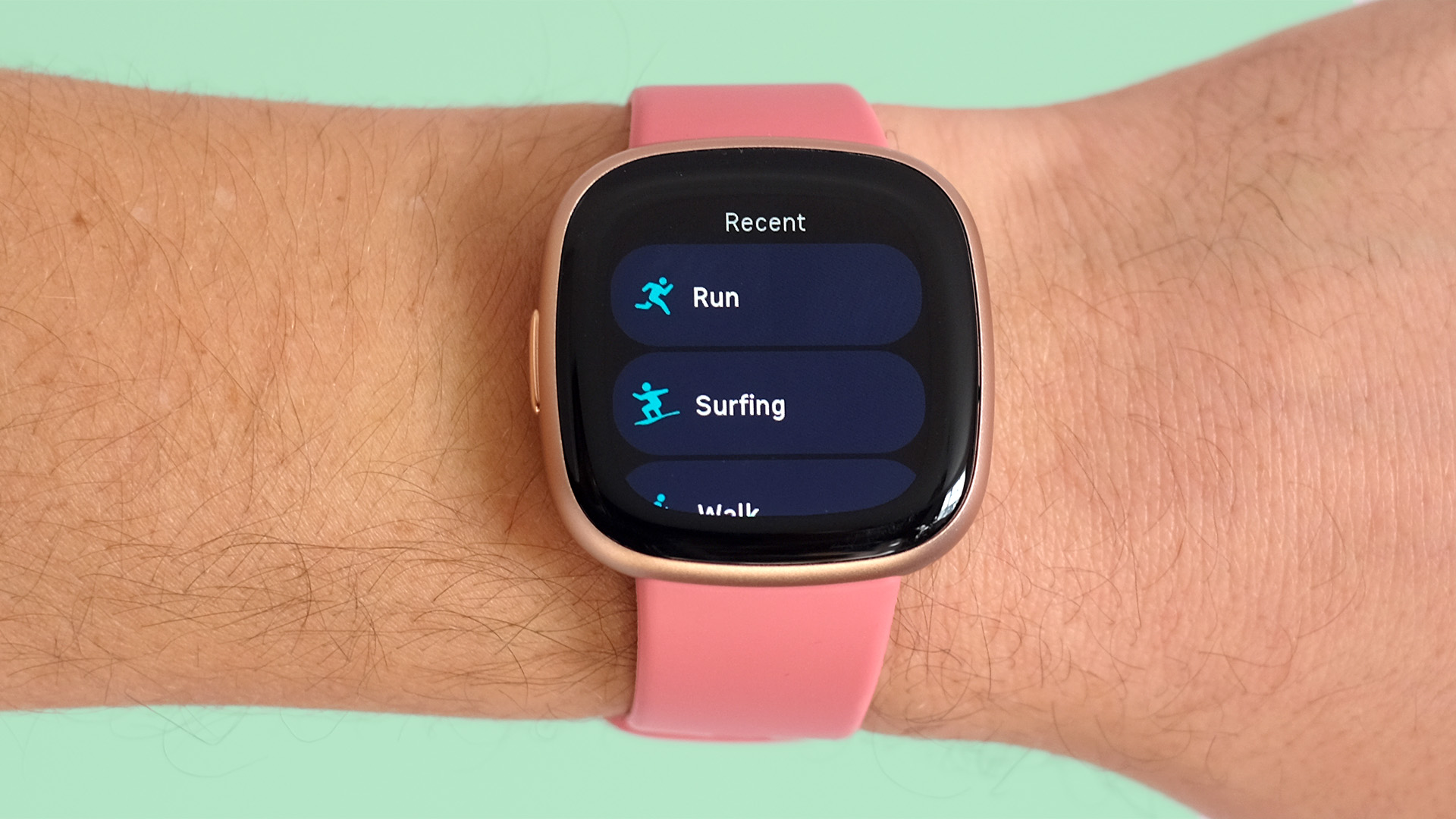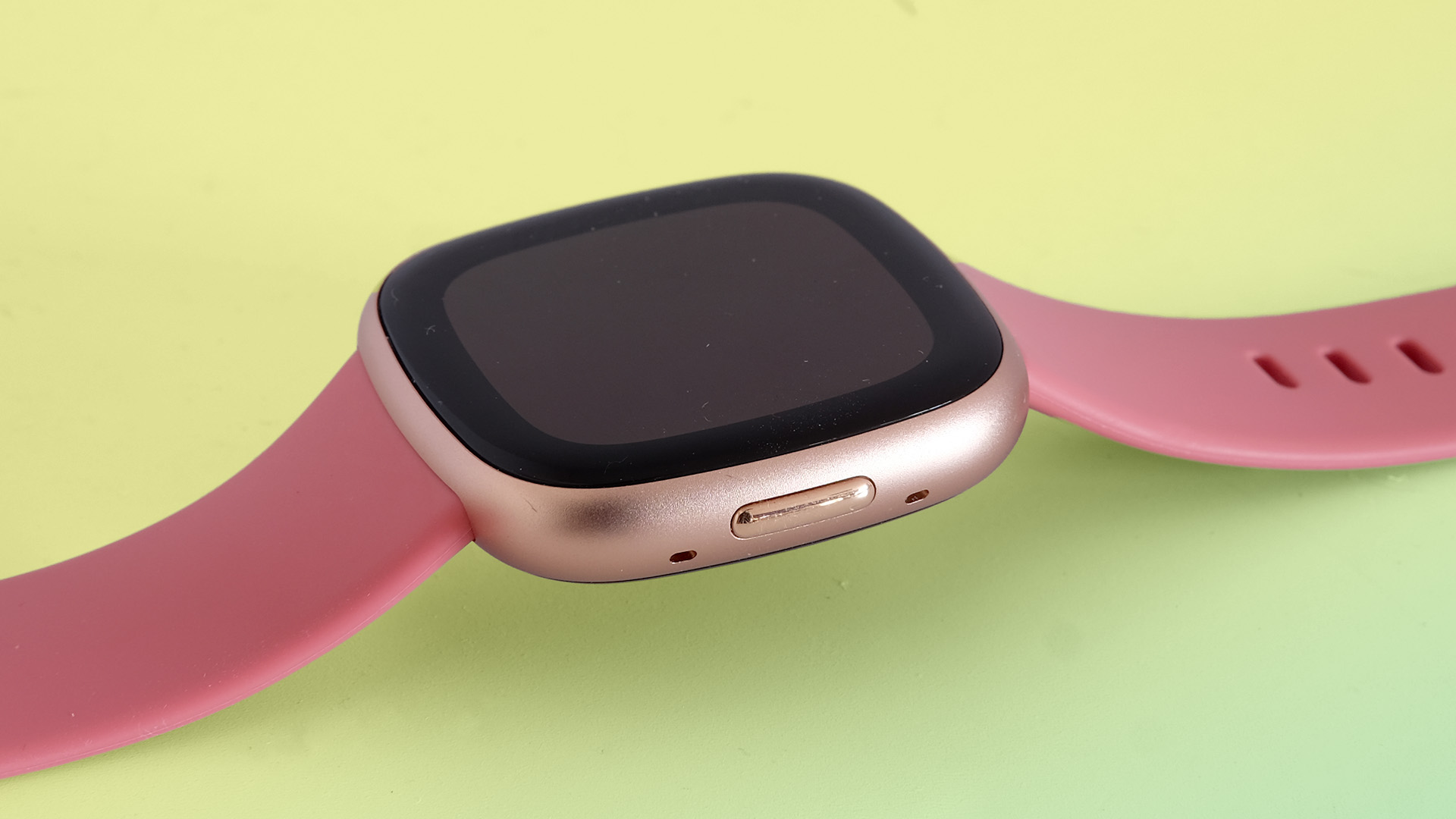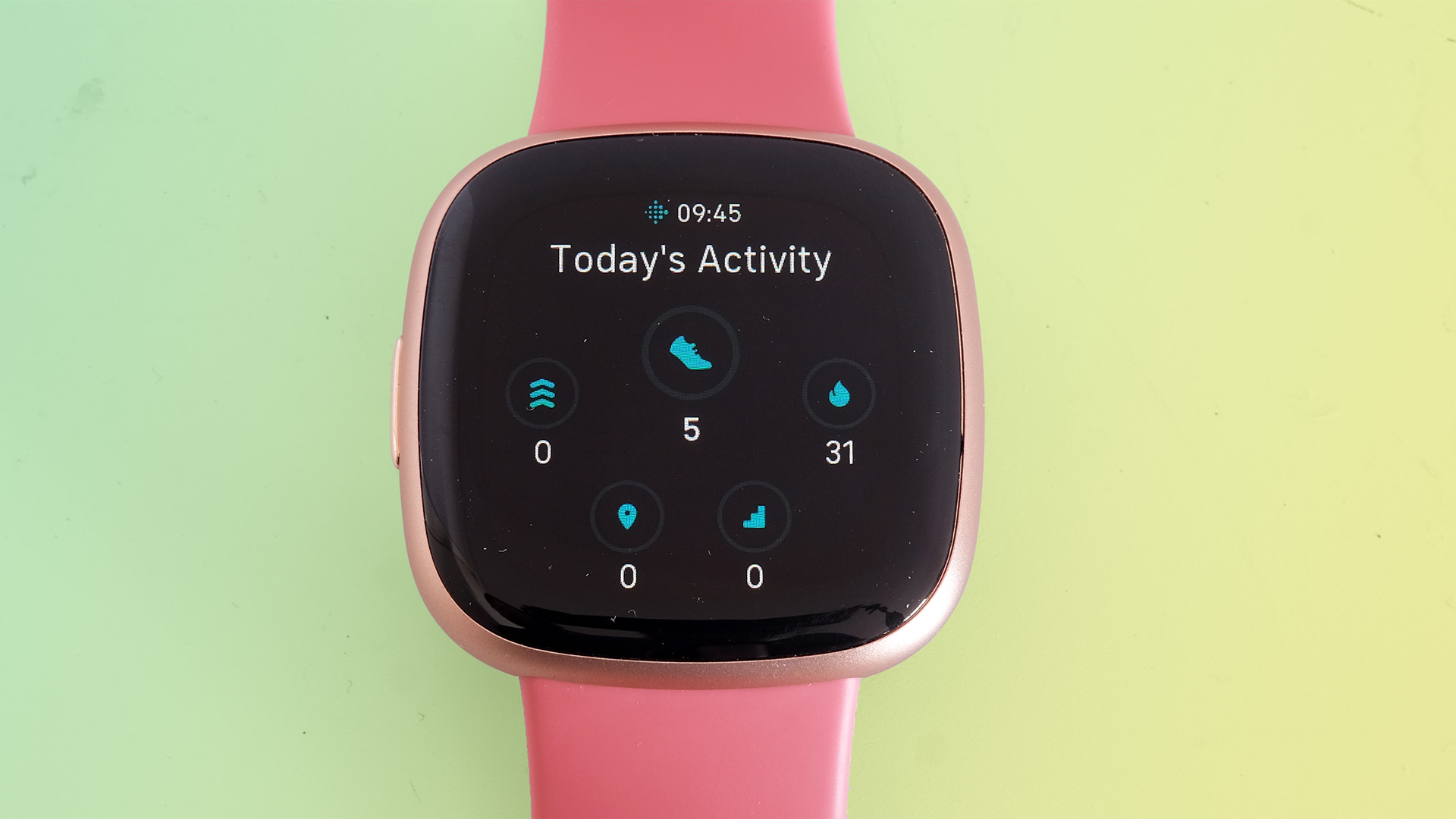Fitbit Versa 4
Welcome to TechRadar's Fitbit Versa 4 review. When Google acquired Fitbit back in 2020, we half expected the best Fitbits, including watches like the Fitbit Versa 4 would use Google’s WearOS software going forwards, but that has not happened. This watch is more like a tweaked version of the Fitbit Versa 3.
It’s not actually a wholesale upgrade from the Versa 3 in all respects either. It’s a beginner-friendly watch, but doesn’t have all the smart potential of some rivals such as the best Apple Watch models.
Third-party apps are out, as is music playback and control, which is arguably far more important. It means the Fitbit Versa 4 isn’t a watch that will let people go out and exercise phone-free, and that is disappointing.
The Fitbit Versa 4 is a slightly less accurate fitness tracker for runners than, for example, an Apple Watch Series 8 or Garmin Venu 2 too. And this leaves it on unstable ground.
However, despite having no real superlatives to crow about, the Fitbit Versa 4 is still a total breeze to live with. The battery lasts a good long while if you don’t use the “always on” display mode, Fitbit’s borrowing of the Pixel Watch’s interface layout presents its smarter features in a pleasant way, particularly notifications. And despite the fitness-related criticisms we’ll cover in this review, it’s easily good enough for folks looking to casually track regular runs and hikes.
Fitbit Versa 4 review: Price and availability
The Fitbit Versa 4 is the lower-cost alternative to a Fitbit Sense 2. It costs $229.95/£199.99/$379.95AU, a good chunk less than the $299.95/£269.99/$445.95AU Fitbit Sense 2.
It launched in late September 2022, two years after the Versa 3. At this price some of the obvious rivals include the Garmin Venu Sq 2 and the Apple Watch SE, which cost slightly less and slightly more respectively.
Fitbit Versa 4 review: Design and display
- It looks very similar to the last model
- Good OLED screen
- 50m water resistance
The Fitbit Versa 4 looks very similar to the Versa 3. It’s a friendly-looking square-faced watch. The screen covering is curved glass. The bezel is aluminum and the rear is plastic.
It’s a less high-end design than an Apple Watch SE, but is clearly more style-driven than the Venu 2 Sq, the closest Garmin alternative. There’s nothing much new and exciting to see here, but there is one key difference compared to the last Versa 3 model.
Fitbit has added a physical button to the Versa 4, where the Versa 3 uses a really quite annoying capacitive panel. The new button feels a little cheap, perhaps because where the casing has a lovely anodized finish, the button is glossy. I initially thought it might even be plastic. It isn’t. It’s metal. Still, having a physical button is far preferable to a capacitive one.
I have never been a fan of the “over-under” watch strap style the Fitbit Versa 4 uses, and the Apple Watch for that matter. However, it does reach the high comfort watermark that you occasionally forget you’re even wearing the watch at all. And that won’t end in catastrophe either, as 50m water resistance is more than enough to withstand a shower, or surface-level swimming.
It weighs 40g all in — strap plus watch face — according to our scales, which is very light.
The screen is a 336 x 336 pixel OLED just like the Versa 3’s. Its screen border is far, far larger than the Apple Watch Series 8’s, but this is not too hard to forgive when the watch is significantly cheaper. The display is also sharp, colorful and easily bright enough to look clear outdoors on a sunny day.
- Design and display score: 4/5

Fitbit Versa 4 review: Features
- Fitbit OS has been reworked to resemble WearOS
- No music support
- Limited smarts, but has good notification handling
The Fitbit Versa 4 does not get WearOS, the smartwatch platform of its owner Google. However, the classic Fitbit OS interface has been redesigned to bring it in closer alignment with Google’s new house style.
Flicking left and right takes you between widget-like screens for each of the Fitbit Versa 4’s core features. These include your daily steps, a run-down of your heart rate over the last day, a sleep report and weather report.
Flick up from the watch face and you get to the run-down of notification cards. Swiping down from the watch face offers access to core features like Do Not Disturb, screen brightness and the Always-on display mode.
It is fairly simple, and Fitbit seems to have significantly reduced the lag of the Versa 3/Sense generation. This could be down to software improvements or new processor hardware, which — as usual — Fitbit hasn’t told us much about. Either way, it’s good news. There’s now just a slight pause when you open up “apps”, .
The Fitbit Versa 4 looks and feels like a smartwatch, but the more you use it, the less it actually seems like one. Third-party app support, after years of waning like an unwatered house plant, has been chopped out altogether. You can’t store music on the watch, you can’t download the Spotify app supported by the Versa 3 to control streamed music playback. You don’t even get basic control of music played on a connected phone, the sort of feature basic fitness trackers have.
Some smarts remain, though. Far more of the interface is given over to notifications than in most watches like this. Each gets a “card” that can be flicked through, like the presentation of emails and messages in WearOS. The Fitbit Versa 4 also supports Amazon Alexa, which may seem odd when Fitbit is now a Google company. Long-press the side button and Alexa pops up. You can ask her to set alarms, what the weather will be like tomorrow or to start a workout.
Any questions requiring answers will be responded to both in text form on-screen, and in voice through the Versa 4’s speaker using voice synthesis. This is pretty neat, although the quality of the speaker is poor. It’s quiet and manages to distort very obviously even at this low volume, like the output of one of those musical birthday cards.
The Fitbit Versa 4 also needs to be consistently connected to your phone for Alexa to work. It reportedly does have Wi-Fi inside, but this is disabled, meaning the interaction has to take place over Bluetooth, being spoon-fed by your phone. Wireless payments are the final notable smart feature. You can set up Fitbit Pay to use the Versa 4 for payments, as you might with an Apple Watch, Garmin or or WearOS watch.
Fitbit says more is coming in the future. Google Wallet is set to be added as an alternative to Fitbit Pay and — far more interesting — Google Maps support is on the cards too. This does not mean you’ll be able to download chunks of map data, or navigate without your phone. Early reports suggest the Versa 4 will simply receive turn-by-turn navigation reminders from a connected phone, which should be handy if you’re heading somewhere on foot.
The Fitbit Versa 4 may have the barebones smartwatch features you want or need. Wireless payments? Notifications? Basic smart assistant support? However, this stripped-back style is way off what we had in the old days when Fitbit had a small but enthusiastic app scene.
We’re unlikely to see too much expansion in this area either as if these Fitbit “health” watches get too smart, they’ll compete too closely with Google’s WearOS bands.
- Features score: 3/5

Fitbit Versa 4 review: Battery life
- Can last for around a week of light use
- Stamina reduces to 2-3 days with the Always On mode
- Battery life matches the claims
However, there’s one area you have to appreciate in these superficially smart watches, like those of Garmin and, from a different angle, Huawei. They always get you much better battery life than an Apple Watch or WearOS watch.
Fitbit says the Versa 4 lasts “6+ days”. After wearing the watch consistently for just under two days, 44 hours to be exact, it had lost 29 percent. This is entirely in line with Fitbit’s claim, suggesting a charge will last just over six days.
It was actually still going seven days after we started keeping tabs on the battery, with 9% battery life left after a week, but this was mostly thanks to a bad habit of absent-mindedly taking watches off.
An hour of GPS-tracked running took seven percent off the charge level, suggesting 14 hours of GPS may be achievable, although Fitbit itself only rates the watch at 12 hours.
This stamina results in a totally different experience to that of an Apple Watch. Charging once a week rather than once a day is bliss. However, this is only if you use the Fitbit Versa 4 in its standard mode, where the screen only lights up following a wrist flick gesture, button press or screen tap.
There’s an always-on mode too, which keeps the screen lit all day. It roughly halves the battery, meaning you’ll have to charge the Fitbit Versa 4 roughly every three days — perhaps even after two days if you’re a heavy user. Some of that Fitbit breeziness dissipates with the always-on mode, but it is the most enjoyable way to use the watch, all in.
- Battery life score: 4/5
Fitbit Versa 4 review: Health and Fitness Tracking
- Heart rate tracking does not match Apple’s or Garmin’s
- Additional modes, but it’s the basics that matter
- No ECG or EDA sensor
Head into the health and fitness side and you’ll see how the Versa 4 differs from the Sense 2. It loses all the high-end health stuff. That means no ECG, which is used to asses your heart health, and no EDA sensor. This monitors your sweat production, as an indicator of stress. The Fitbit Versa 4 is left with GPS, an optical heart rate sensor and an altimeter, used to count how many flights of stairs you climb up each day. As such the Versa lacks some of the “health” angles of the Sense 2 but retains all the important fitness stuff.
However, after comparing the Versa 4 with the Apple Watch Series 8, Garmin Venu 2 Sq and Garmin Fenix 7 to track workouts, it does lag behind the best in a few important areas.
When tracking a run, GPS can be quite slow to lock on. And while this has improved after a few weeks of workouts in the same location, it still hasn’t exactly become super-fast. We’ve been spoilt by some of the latest Garmins, which triangulate almost instantly.
The Fitbit Versa 4’s tracked routes also seem a little vaguer than Apple’s or Garmin’s, more liable to veer off the actual course, and are composed of fewer nodes than the best. There seemed to be little consistency about whether the Versa recorded longer, or shorter, distances over an actual kilometer than a Garmin or Apple Watch. But are folks who are not going to directly A/B compare watches likely to be satisfied? Sure, the Versa 4’s GPS tracking is largely fine for more casual workout tracking.
Heart rate recording brings up some more obvious issues. While we haven’t seen the major problems experienced with the original Fitbit Sense, such as at times completely missing entire exertion hikes during mixed efforts, performance is still way below the best.
The recurring issue this time is an overly steep heart rate spike during early exertion in each workout. It often overestimates your heart rate, before coming down to a more realistic level. In sessions of moderation exertion, this can throw off the maximum heart rate for the entire session.
The Apple Watch SE and Garmin Venu 2 Sq have better heart rate sensors based on our testing. However, we’re glad to see some progress does seem to have been made since the last generation. The Versa 4 HR sensor didn’t lose the plot completely at any point.
The Fitbit approach to exercise is also pretty light. For example, by default, the Versa 4 buzzes you with the vibration motor when you go from one heart rate zone into another, even if you’re out for a run rather than in a gym class. The runner’s watch standard is to show a performance update at each km, so the Versa 4 approach doesn’t provide that important sense of structure.
You can get this “per km” update with a tweak, but the watch feels geared up more for casual tracking than for those with a more structured approach to workouts. This is seen in the workout screen too, which has just three metrics visible per page when we often want four when out for a run — making you flick across the screen to see additional stats.
One of the big changes for this generation is a set of extra tracking modes, taking us from “20+” in the Versa 3 to 41 here. However, this is not ultimately a particularly meaningful improvement when many of the new modes display and record the same stats, just under a different label. Indoor climbing, yoga, and spinning modes are functionally near-identical — disappointing when you would imagine the climbing mode could at least make use of the barometric altimeter.
Some of the information the Fitbit Versa 4 can provide is only available to those who sign up for Fitbit Premium too. This is a $9.99/£9.99 a month service that also offers a bunch of video workouts and meditation sessions.
It is also what provides a longer-term analysis of the stats your watch records, comparing current readings with those of weeks and months past. Without Premium you also miss out sleep tracking insights, snore detection and Daily Readiness, which tells you whether your body is ready to workout or not.
Without Premium, you can see the various sleep stages you go through each night, how long you slept, and variations in your blood oxygenation, but not your heart rate or “restlessness”.
Fitbit likes to remind you of what you’re missing too, with frequent references to Premium in the Fitbit app. However, you can get on without it just fine. You still get access to Fitbit’s long-standing challenges, where your steps are pitted against those of friends of strangers. And you don’t necessarily need additional structure if you can get motivation from improvements in how long, or how fast, you can run.
Some parts of the app really do need a nip and tuck, though. Why is there a “Skin temperature” section in the Health metrics area when the Versa 4 doesn’t have a temperature sensor? And should there really be an Apps Gallery part anymore when there literally aren’t any other apps to get?

- Health and fitness tracking score: 3/5
0 comments:
Post a Comment